The KGSP (Korean Government Scholarship Program) is a highly sought-after opportunity for students who wish to study in South Korea.
With its comprehensive coverage of tuition fees, airfare, and living expenses, the scholarship offers a unique chance to immerse oneself in the rich cultural and academic atmosphere of South Korea.
Whether you are a student looking to pursue a higher degree or a researcher seeking new opportunities, the KGSP scholarship is designed to support your academic and personal growth.
This blog will explore everything you need to know about the KGSP scholarship program, from eligibility criteria and application procedures to the benefits of studying in South Korea.
So, if you’re ready to embark on a journey of discovery, read on to learn more about the KGSP scholarship program.
Want to study in the UK for free? Here is step by step process for the Gates Cambridge scholarship.
Korean Government Scholarship
1. Benefits of Korean Government Scholarship
2. Eligibility Criteria for Korean Government Scholarship
3. Documents required for Korean Government Scholarship
4. How to apply for Korean Government Scholarship
5. Deadlines of KGSP Graduate Scholarship
7. FAQS Korean Government Scholarship Program
Here is our detailed guide about Netherlands Government scholarships.
1. Benefits of Korean Government Scholarship
The KGSP scholarship program is here to make your life in South Korea as smooth as possible!
With this scholarship, you’ll get all sorts of support to help you study and live comfortably. Here’s what you can expect:
1. A plane ticket to and from South Korea, all economy class
2. A one-time allowance of ₩200,000 (151 USD) when you first arrive, for settlement.
3. A monthly allowance of ₩900,000 (680 USD) for master’s/doctoral degree students or ₩1,500,000 (1134 USD) for research program students to cover living expenses
4. Research allowance of ₩210,000 (158 USD) per semester, if you’re studying Liberal Arts or Social Science, or 240,000 (181 USD), won if you’re in Natural Science and Engineering.
5. Free one-year Korean Language Training for Master’s and Doctoral degree students
6. tuition fee is waived
7. Reimbursement of thesis printing fees, up to ₩500,000 (378 USD) for Liberal Arts and Social Science majors and up to 800,000 (606 USD)
won for Natural Science & Engineering and Arts, Music & Sports majors for Master’s and Doctoral degree students
8. Monthly medical insurance of ₩20,000 (15 USD) to keep you healthy
9. A Korean proficiency grant of ₩100,000/month (75 USD) for Master’s and Doctoral degree students who have a TOPIK level 5 or 6.
10. And finally, a one-time degree completion grant of ₩100,000 (75 USD) when you finish your program.
With all these benefits, you’ll be able to focus on your studies and research without worrying about the cost of living.
Want to study at Oxford University for free? Learn about the Rhodes scholarship.
2. Eligibility Criteria for Korean Government Scholarship
There are a few eligibility criteria that you’ll need to meet. Let’s take a closer look at what’s required.
Nationality: To be eligible for the scholarship, you must not hold Korean citizenship or dual citizenship.
Age: There are age restrictions based on the level of degree you’re applying for. For undergraduate degrees, you must be below 25 years of age. For graduate degrees, you must be below 40 years of age.
Academic record: The scholarship is awarded based on academic merit, so you’ll need to have an excellent academic and school record. You’ll need to have secured more than 80% of your CGPA to be eligible.
Health: To be eligible for the scholarship, you must be in good physical and mental health.
2.1. List Of Eligible Universities
Considering the two types of tracks for the Global Korea Scholarship, the below list provides university names for each track separately.
|
Type of University |
Embassy Track |
|
Type-A |
Ajou UniversityChung-Ang University, Dongguk University (Seoul), Duksung Women’s University, Ewha Womans University, Hankuk University of Foreign Studies, Hanyang University (Seoul), Inha University, Konkuk University, Kookmin University, Korea University, Kyung Hee University, Seokyeong University, Seoul National University, SeoulTech (Seoul National University of Science and Technology), Shinhan University, Sogang University, Sookmyung Women’s University, Sungkyunkwan University, Sungshin Women’s University, Tech University of Korea, UNIST (Ulsan National Institute of Science and Technology), University of Seoul, Yonsei University |
|
Type-B |
Busan University of Foreign Studies, Chonnam National University, Chungbuk National University, Chungnam National University, Daegu University, Daejeon University, Dong-A University, Dongseo University, Gyeongsang National University, Hannam University, Hoseo University, Inje University, Jeju National University, Jeonbuk National University, Kangwon National University, Keimyung University, Kongju National University, Konyang University, KOREATECH (Korea University of Technology and Education), Kyungpook National University, National Korea Maritime & Ocean University, Pai Chai University, Pukyong National University, Pusan National University, Semyung University, Silla University, Soonchunhyang University, Sun Moon University, Sunchon National University, Yeungnam University |
|
Type of Programs |
University Track |
|
Bachelor’s |
Ajou University, Konyang University, Kookmin University, KOREATECH (Korea University of Technology and Education), Pusan National University, Sogang University, Soonchunhyang University, Tech University of Korea
|
|
Associate Degrees |
Kyungbok University, Osan University, Yeungjin University |
Here is everything you want to know about Turkey Burslari Scholarships.
3. Documents required for Korean Government Scholarship
If you’re applying for the Korean Government Scholarship program, you must gather a few important documents.
3.2. Passport & National ID card
3.3. Language Proficiency certificate (Optional)
3.5. University admission letter
3.6. Hope certificate (If applicable)
3.8. Statement of Purpose or Motivational Letter
Here is our complete guide to Taiwan government scholarships.
3.1. Academic documents
This includes all your certificates & academic record like
A: Bachelor’s transcript & certificate
B: Master’s transcript & certificate (if the student is applying for 2nd Master’s or fellowship)
C: Metric & FSC transcripts (10-12th Grade) (A level) (DMCs) and certificates (Supporting academic documents)
D: Course summary (to explain your courses & how your previous courses & studies resemble your future studies in which you are applying)
NOTE:
All of the above documents should be attested by respective boards.
Also, attest them from issuing authority of home countries. The respective university must attest university documents.
In the case of Pakistan, The above-mentioned documents must be attested by IBCC, HEC, and MOFA (Ministry of Foreign Affairs).
IBCC authority is only responsible for the attestation of metric and inter documents.
Dear offices are present in Peshawar, Karachi, Lahore, Islamabad, and also in other cities of Pakistan.
HEC office attests to bachelor’s, master’s, and Ph.D. documents.
Empower yourself with USA Fulbright scholarship.
3.2. Valid passport & NIC
The passport of the applicant must contain at least one full blank page on both sides.
The passport must be valid at the time of visa application and on arrival to Korea.
A birth certificate or national ID card is also important to attach.
Want to study in France for free, Check our ultimate guide about Eiffel scholarships.
3.3. Language Proficiency certificate (IELTS/TOEFL) for Korean Government Scholarship
It is not the requirement of a Korean Government scholarship per se. Still, International students need to provide a language proficiency certificate in case to get admission to an English program.
English proficiency certificate is proof that the medium of taught courses was English.
However, you can apply without showing the test score.
Check our ultimate guide about New Zealand Government Scholarship.
3.4. Recommendation letters / Letters of References
The applicants must provide 2-3 letters of recommendation from the previous university, (Depending upon courses).
It is advised to provide a letter of recommendation from the HOD (Head of the department or Relevant course head) who should be a PhD.
In the case of undergraduates, the Letters should be written by the principal or institution’s head.
The referees need to write their contact details (Email, phone number) at the end of the letter.
The letter must include an official letterhead, signature, and official stamp and must be of the current date.
Ask your Referees to write about your academic achievements & discuss their confidence in you that you are fully compatible with the project or course you wish to pursue.
The referees must also mention how long they know the applicant & when was the last time they came in contact with the applicant.
Check our ultimate guide about Australia Awards Scholarships.
3.5. University admission letter:
Applicants must select a university offering courses related to their interests and background.
It must be affiliated with the Korean Government Scholarship program.
Want to study in Denmark for free, here is our ultimate guide for Danish Government Scholarships.
3.6. Hope certificate (If applicable)
If the final transcript isn’t ready then students can apply with a Hope certificate from their university.
However, they must be graduated before their arrival in Korea.
What is Hope’s certificate?
In simple words, It is a certificate based on the previous semester’s performance, that indicates that the candidate will pass the final exams with excellent results.
Want to study in Japan for free? Check our ultimate guide about MEXT Scholarship Japan.
3.7. Research Plan / Proposal
It contains your Research publications/ Achievements (conference papers, article review, abstract of thesis)
The research proposal is mostly required for postdocs or Ph.D. students. (Depend upon the courses)
It asks you to write about the research project you agree upon completing with the assigned academic advisor.
Your research proposal should be a brief description of your research goals and objectives, the methods with which you wish to process that research, the outcomes you desire, the timeline and budget you have estimated, and the area of study you wish upon exploring.
It shall be a brief document yet explain the entire vision to the reader so that those analyzing your application could know of your objectives and grant you the scholarship if they match the program’s criteria and eligibility.
Taking help from an external party is strictly prohibited and violation in this regard could lead to your disqualification no matter how incredible your proposal is.
Here is our detailed guide about Great Scholarships UK.
3.8. Statement of Purpose or Letter of Motivation for Korean Government Scholarship:
Remember, SOP or LOM can be asked during university admission or applying for a Korean Government scholarship.
Technically SOP or LOM are the same things.
It’s a Short biography to tell the panelist about yourself:
A letter of motivation or SOP could be a tricky part while selecting your course in Japanese universities.
In this letter, you are asked to write about your personal and professional reasons why are you applying for a course & scholarship.
The maximum length of this letter is three pages, But it is advised to make it short & concise to one page.
How to write a perfect letter of Motivation
If you are interested in writing your LOM on one page concisely, then follow this exact method.
LOM consists of three parts.
3.8.1. Introduction (one paragraph)
3.8.2. Body (3 paragraphs)
3.8.3. Conclusion (1 paragraph)
Let’s explain these three things one by one.
3.8.1. Introduction:
Introduction is the gateway to the rest of the letter. Try to capture their interest in first few sentences. Be original & creative.
Make it personal & full of enthusiasm.
TIP: Try to initiate a story about yourself relevant to the scholarship you are applying & then expand it to the first paragraph of the body.
3.8.2. Body:
In the first paragraph of the body, try to tell about your relevant academic & experienced background to the course.
And your professional goals attached to Korea & university. Share your expectations of the scholarship.
In the 2nd paragraph be more precise & focus on the specific achievement related to the scholarship & course.
In the 3rd paragraph expand on what you are currently doing & the interesting things you look forward to.
3.8.3. Conclusion:
Tell them why you are the best candidate for the Korean Government scholarship. Don’t sound needy or use pompous language instead focus on why you deserve it.
Tell them how this scholarship will help you or the future of your community.
If you want to study in Italy for free, find out our detailed guides about DSU and EDISU scholarships.
3.9. Europass CV
Europass CV can be easily made here.
The Cv must contain all the latest & relevant information about your occupation & interests.
A perfect CV must be hand signed.
If you want to study in UK for free, find out our detailed guides about Chevening and Commonwealth scholarships.
3.10. Experience letter
Applicant must provide an Experience letter of the previous jobs & Internships.
Try to customize the work experience letter with future studies.
Mention your job descriptions, work projects & the skills you learned through time.
The letter must be signed & verified by the Head or CEO of the company.
The work experience could be Paid,
Unpaid,
full-time,
part-time, or voluntary.
It could be done before, during, or after graduation.
If you want to study in Germany for free, find out our detailed guide about the DAAD scholarship.
3.11. Portfolios or workshop
It’s optional. But students can attach portfolios or workshops to support their cases for university admission or scholarship.
4. How to apply for Korean Government Scholarship
Applying for the Korean Government Scholarship Program 2022 is super easy and straightforward! Here’s how you can do it:
Select your track > Compile Documents > Go to Online Application > Fill in required details > Attach Documents > Submit
The Application process is of two types, you can apply through any one of it
1- University Track for Korean Government Scholarship
The track is used for master’s scholarships in which you select any Government university in Korea.
In this process, you are required to fill out the application form available on the university’s official website.
The application will require additional information that will be referred to as a Korean Government Scholarship application.
2- Embassy Track for Korean Government Scholarship
This track is directly affiliated with Korean Embassy or a Diplomatic mission to your country.
You must send the documents along with the application form to the embassy.
The application form is available at the website of the respective Embassy in your home country.
The hard copy of the application must be posted before the due date of the Scholarship.
You can select 3 universities as a preference in Embassy Track.
Some of the steps to apply for the Korean Government Application include:
4.1. Select your Track
Choose your preferred way of applying – either through the Korean Embassy in your country or directly to a domestic university in Korea.
4.2. Compile Documents
If you choose to apply through the embassy, make sure to send original or attested copies of your documents to the embassy.
If you choose to apply directly to a university, gather all your supporting documents and get ready to submit them to the university of your choice.
We discussed the required list of documents above in detail.
4.3. Fill in the Application form
Fill out the application form and attach all the necessary documents. Make sure to double-check everything before submitting your application.
4.4. Submit the Application
Submit your application either to the Korean Embassy or to the university.
Note:
- If you’re applying through the embassy, remember that you can apply to up to three universities.
- But if you’re applying directly to a university, you can only apply to one.
- Sit back and wait for the results of your application.
- If you’re selected in the second round of the Embassy track process, don’t consider it as the final selection. Keep your fingers crossed!
You can visit the official website for the online application portal.
Check the screenshot
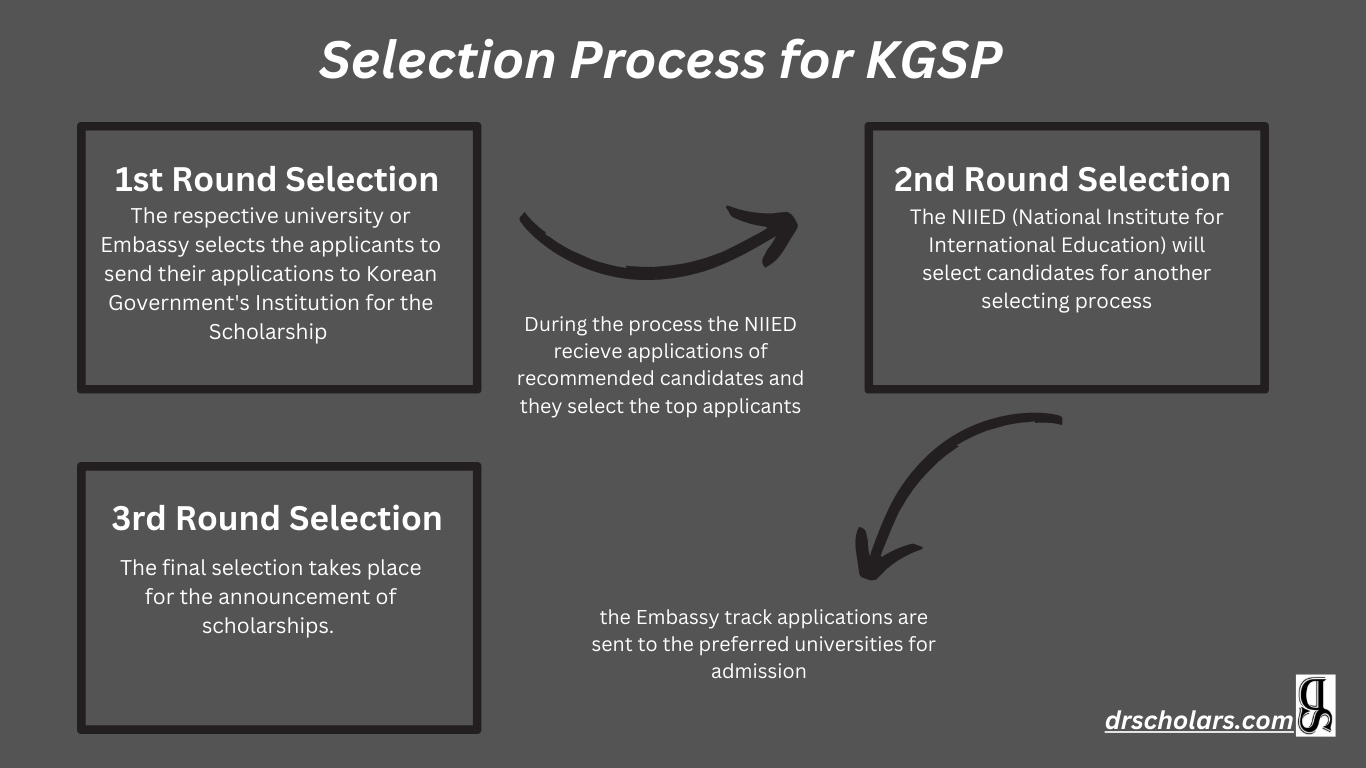
5. Deadlines of Korean Government Scholarship
The last date to apply for the Korean Government Scholarship Program is February 28th, 2023.
Keep in mind that each Korean university and embassy may have its own specific deadline, so it’s best to check with the Korean embassy in your home country for more info.
And if you need the application form or any additional details, just hit up the official website of the Korean government scholarship.
Want to study in Switzerland completely free? Check the Swiss Government Excellence Scholarship.
6. KGSP Contact
191, Jeongjail-ro, Bundang-gu, Seongnam-si, Gyeonggi-do, Korea
Zip Code: 13557
Phone: 02-3668-1490,1491
Email: webmaster@studyinkorea.go.kr
7. FAQS Korean Government Scholarship
Q: Can I apply for the Korean Government Scholarship Program if I’m not a citizen of Korea?
A: Of course! The scholarship is open to international students, so as long as you meet the eligibility criteria, you’re welcome to apply!
Q: I’m over 25 years old, am I still eligible for the scholarship?
A: The scholarship is available for both undergraduate and graduate students, but the age limit for each differs.
If you’re applying for a graduate program, the age limit is 40 years, so you may still be eligible!
Q: Do I need to have a high CGPA to apply for the GKS/KGSP?
A: Yes, a high academic record is one of the eligibility criteria for the scholarship. You should have a CGPA of more than 80%.
Q: What kind of medical insurance do I get as a scholarship recipient?
A: You’ll receive medical insurance of KRW 20,000 per month.
Q: What documents do I need to submit when applying for the KGSP?
A: You’ll need to provide a letter of intent, personal statement and study plan, two letters of recommendation, a signed scholarship agreement, your official bachelor’s certificate of graduation and transcript, and copies of your passport and your parents’ passports, among other documents.
Q: Can I apply to more than one university for the KGSP?
A: If you apply to the Korean embassy in your home country, you can apply to up to three universities. If you apply directly to a university in Korea, you can only apply to one.
Q: What’s the deadline for applying for the Korean Government scholarship?
A: The general deadline for this year is February 28. However, each Korean embassy and university may have its own specific deadline, so be sure to check with them directly for more information.
Summary of KGSP
Let’s summarize the whole guide quickly:
Korean Government Scholarship Program provides support for students to study and live comfortably in South Korea
The Benefits of GKS are plane tickets, settling-in allowance, monthly allowance, research allowance, free Korean language training, tuition fee coverage, thesis printing fee reimbursement, and so on.
The application can be submitted by two different methods. An embassy track and the university track. The application is available on the official website of Study in Korea.
So, if you want to enjoy all the benefits of the Korean Government Scholarship Program and achieve your academic goals in South Korea, start gathering your documents and preparing to apply. And don’t forget to use this guide for details.
Everything you want to know about the MO Ibrahim scholarship in the UK.
We try to cover each & everything about the topic, but if you still have any questions please don’t hesitate to ask us in the comments.
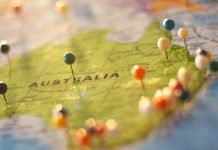

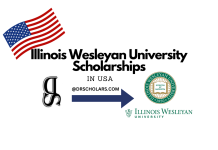
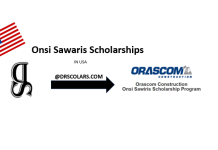
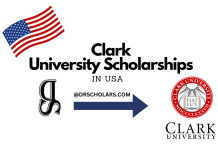







What if we don’t have 80% but we are in top 20 students from our class , am I eligible then ??
Can we directly apply for scholarship to the particular university ?
Which one is good to apply through University track or embassy track?